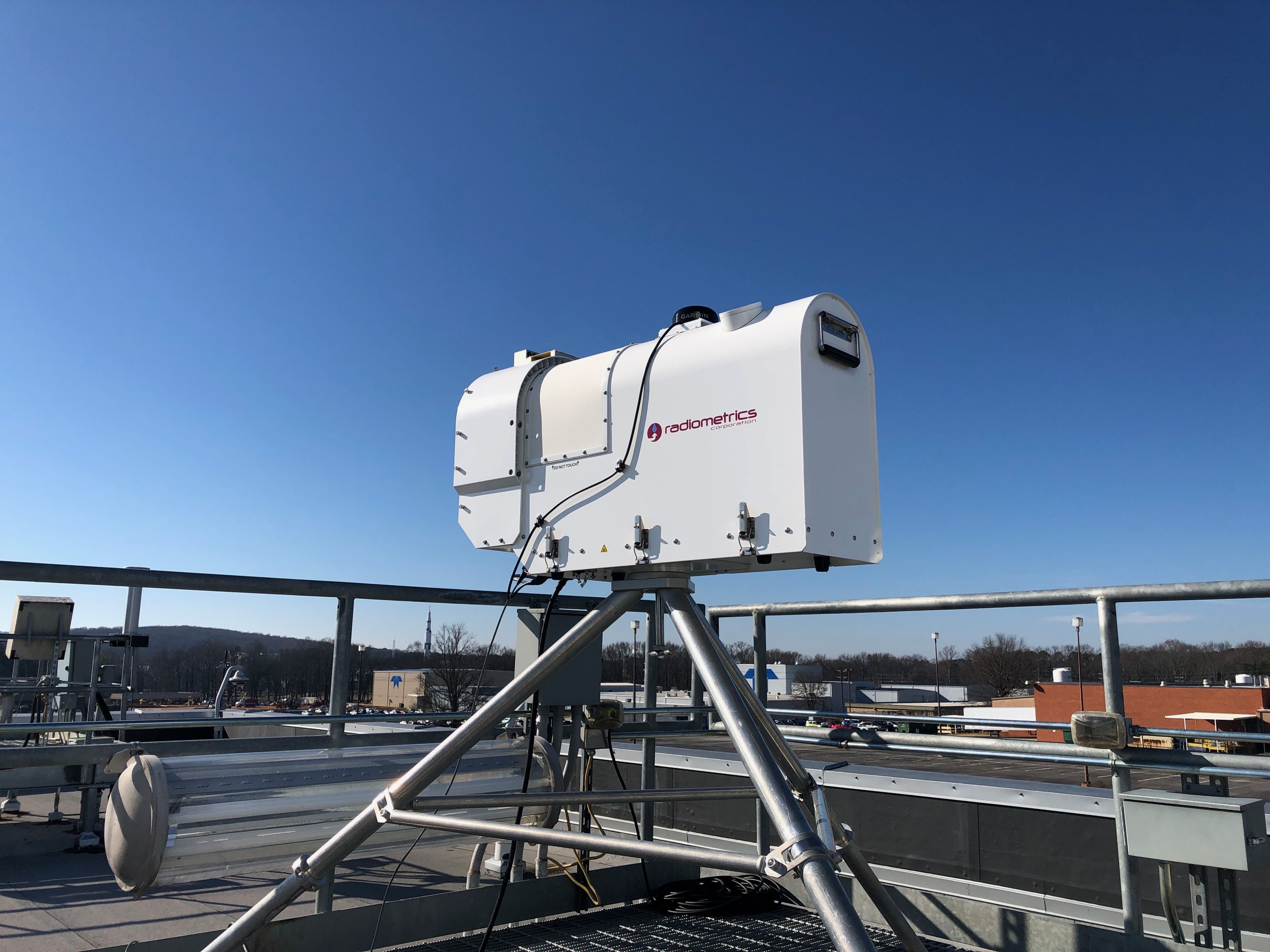|
Mounted on three of the four MAPNet platforms, the Microwave Profiling Radiometer (MPR) provides vertical structures of thermodynamics within the lower atmosphere. The Radiometrics MPR used on the MAPNet platforms sample irradiance on the shoulders of the water vapor (21-30 GHz) and oxygen (51-59 GHZ) bands to retrieve temperature, water vapor density, and liquid water. Utilizing a neural network retrieval scheme based on climatology soundings, retrievals can extend to heights of 10 km and provided every 1-minute. Integrated liquid water and integrated water vapor variables are also recorded. These versions of MPRs can provide profiles in clear, cloudy, and weakly precipitating conditions (snow and very light rain). Although these MPRs have poorer vertical resolution and accuracy compared to the AERI system, this radiometer provides deeper tropospheric thermodynamic profiles during overcast conditions that are common during humid and stormy atmospheric conditions. Unlike radar instruments that are used within the MAPNet (915 MHz Radar Wind Profiler, XPR, MAX), the MPR is a passive instrument (signal is not emitted and then backscattered, but only received). Using an internal mirror, microwave radiation within the Oxygen and water vapor channels is passed into the receiver and is used to build the temperature and moisture profiles. The MPR also has a temperature/RH probe, rain sensor, and pressure sensor mounted on it to retrieve surface in-situ measurements. An infrared temperature sensor is also located on the MPR which provides cloud base height and temperature information. 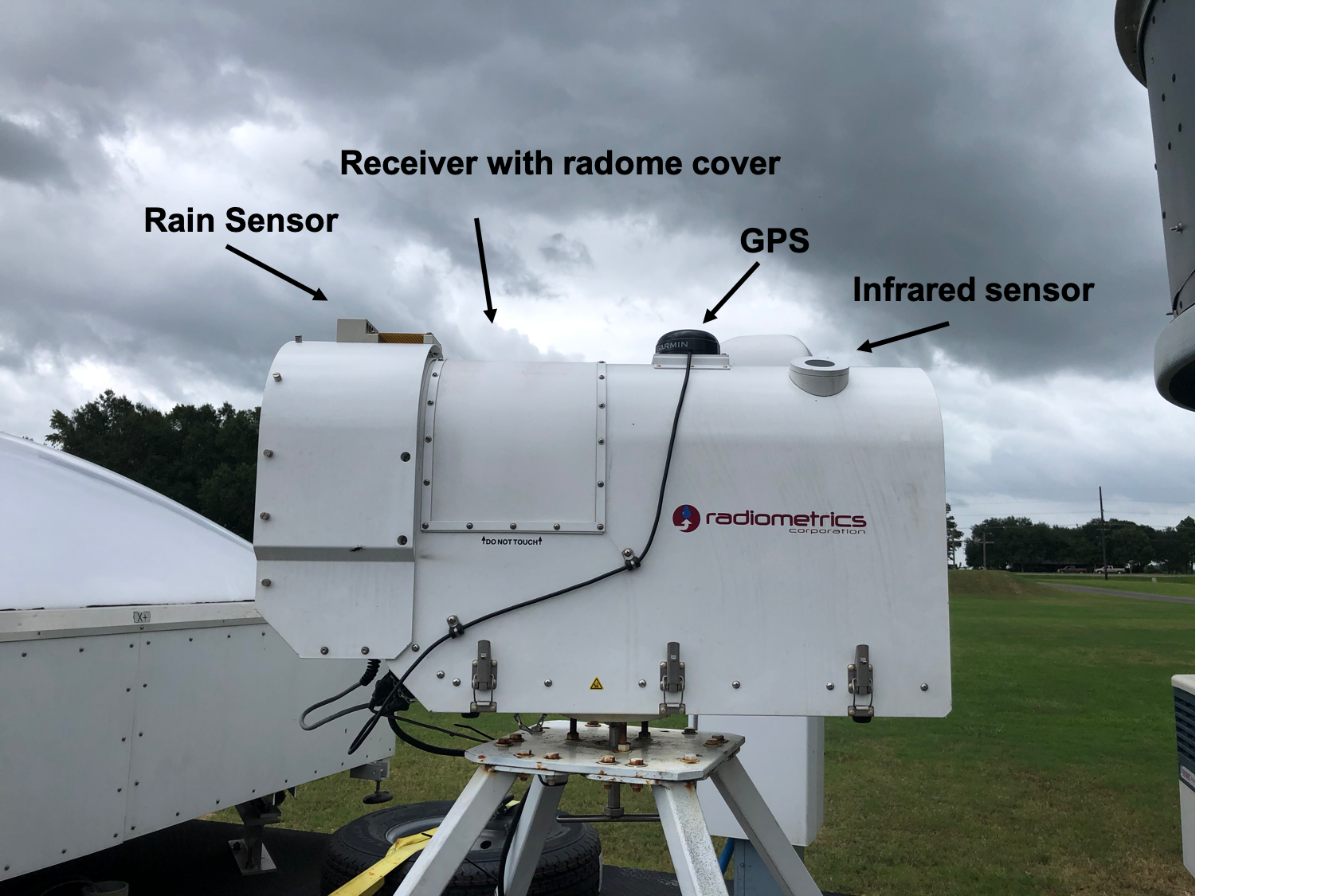
The MIPS 35-Channel MPR |
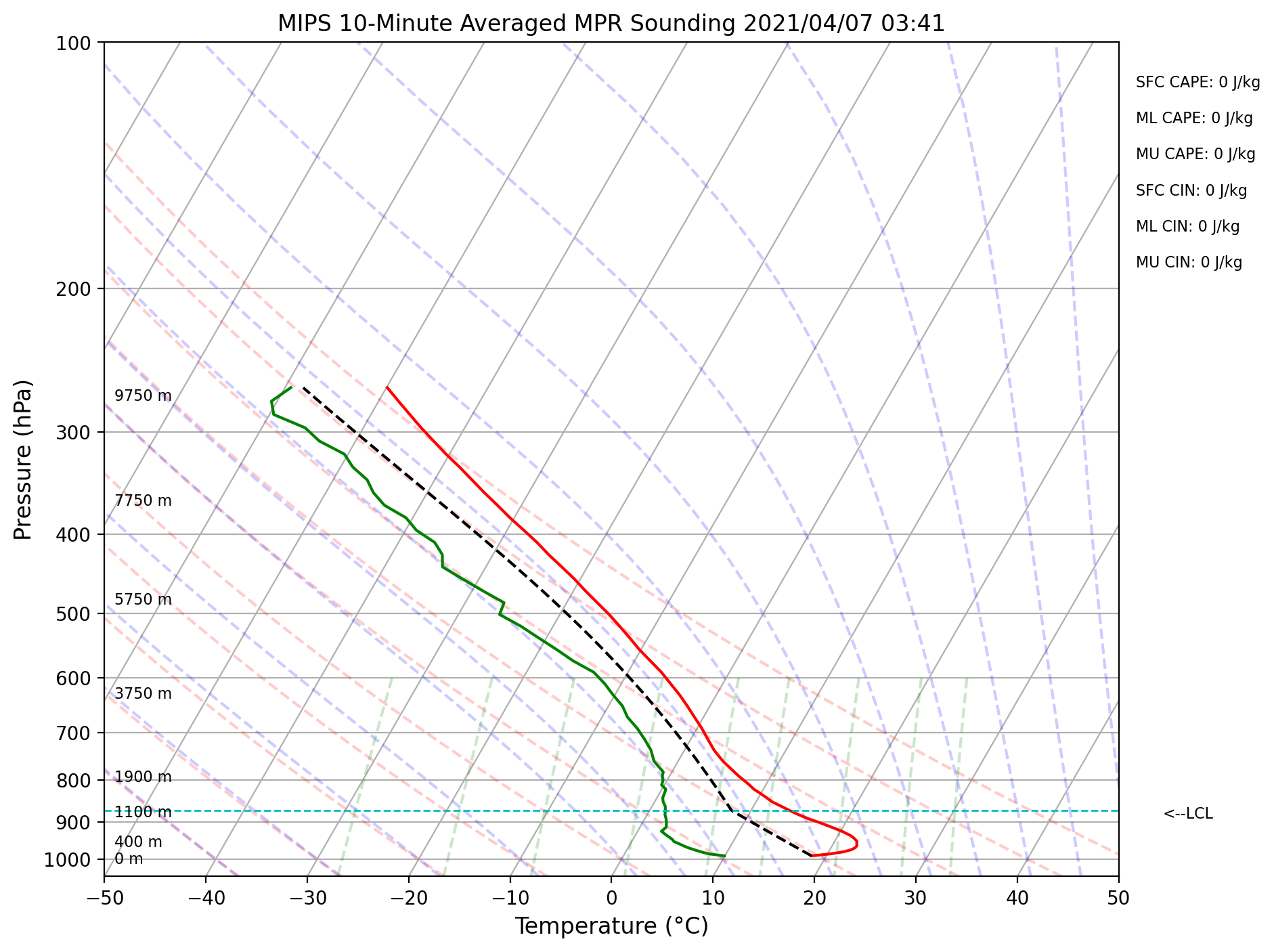
The MIPS MPR-derived sounding depicting a night-time low-level inversion. 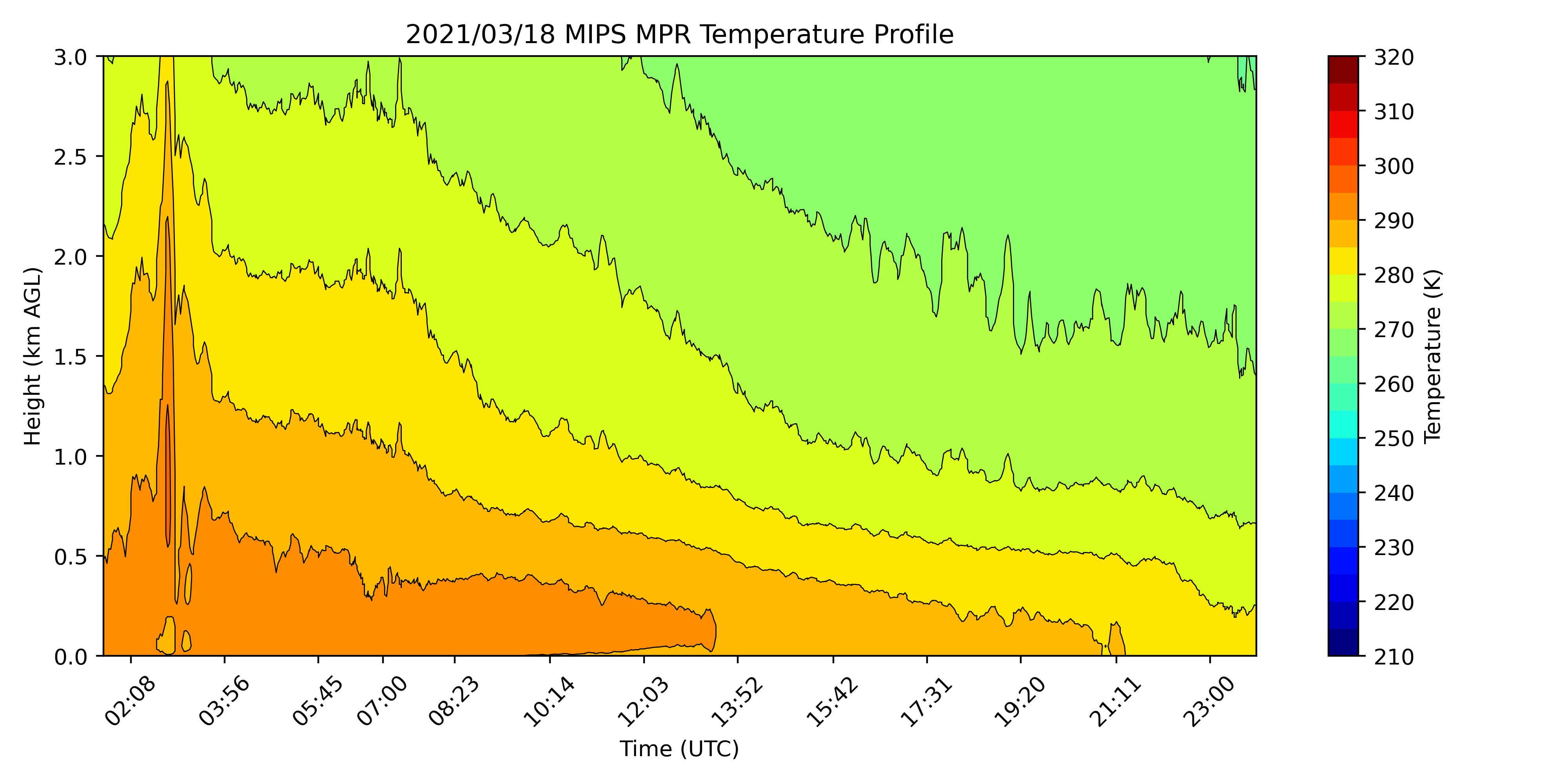
The MIPS MPR temperature retrieval during a frontal passage. 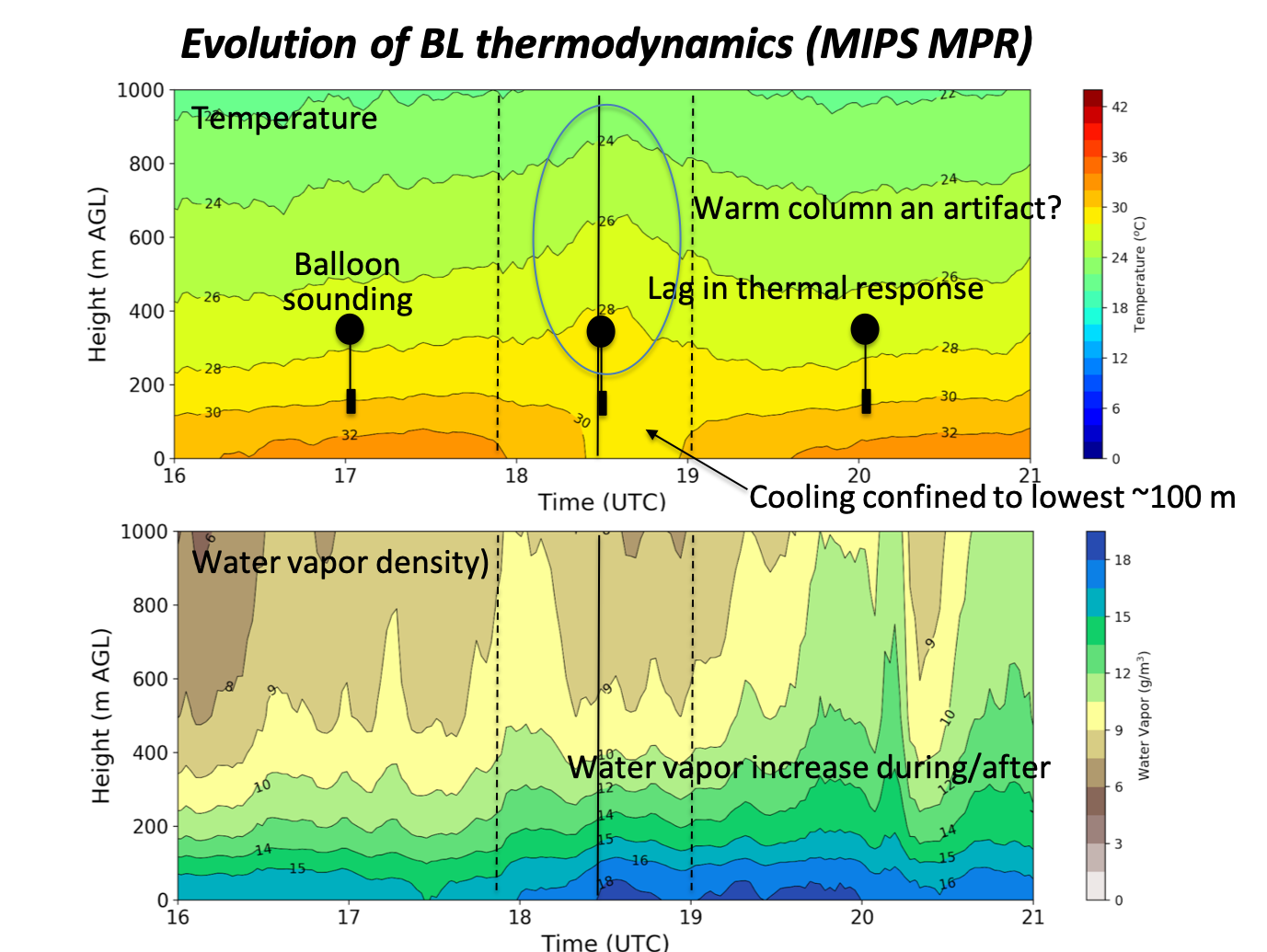
The MIPS MPR retrievals in totality during the 2017 solar eclipse |
×

